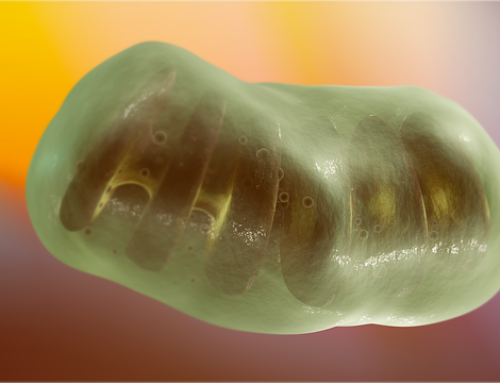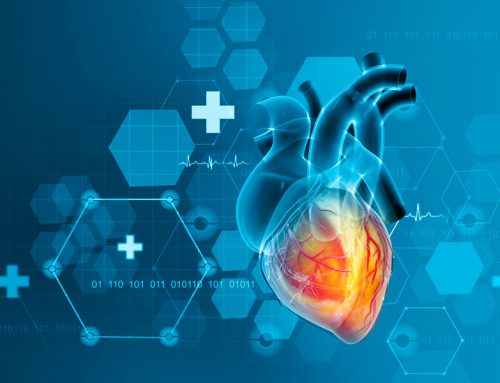
The more intensely and strenuously we exercise, the more quickly we reach the anaerobic threshold. A 2012 study has shown that 200 milligrams of Coenzyme Q10 daily can significantly delay the time to the anaerobic threshold. The Coenzyme Q10 supplementation was also associated with significant improvement in muscle strength in the study.
Older active adults who are taking a statin medication? Shouldn’t they go right to the top of the list of people who need a good Coenzyme Q10 supplement?
That is the question that Dr. Richard Deichmann and his colleagues in the Department of Internal Medicine at the Ochsner Clinical School in New Orleans asked themselves. They tested whether daily supplementation with 200 milligrams of Coenzyme Q10 daily for six weeks would improve measures of cellular energy production, muscle function, and well-being in older active adults taking statin medications.
Lower Coenzyme Q10 levels in older people
After all, older people’s cells tend to produce less Coenzyme Q10, and older people tend to have lower plasma Coenzyme Q10 levels [Kalen 1989, Rosenfeldt 2003, Rosenfeldt 2005].
Lower Coenzyme Q10 levels associated with statin medications
If, then, the older people also take a statin medication, they are taking a medication that is clearly associated with reduced levels of Coenzyme Q10 in plasma and tissue. The statin medications’ inhibition of the synthesis of cholesterol blocks the same biological pathway that produces Coenzyme Q10 [Littarru 2007].
Statins also have the unfortunate side effect of reducing the body’s production of selenoproteins [Okuyama].
Ironically, we may find out that the statin medications, while effective at lowering cholesterol levels and at reducing the number of heart attacks, have been contributing to the epidemic of heart failure and atherosclerosis that has occurred during the same period that patients have been taking statin medications.
Drs. Okuyama and Langsjoen have proposed that the guidelines for the prescription of statin medications be re-evaluated [2015].
The study design and the study sample
Dr. Deichmann and his team recruited 19 athletes (15 men and 4 women) with an average age of 64 years (range: 50 – 79 years) to a randomized, double-blind, placebo-controlled cross-over study. The participants’ body mass index was, on average, 24.7 kilograms per square meter [Deichmann 2012].
The study participants were randomly assigned to take the 200-milligram Coenzyme Q10 supplement or the placebo for six weeks. There followed a washout period of six weeks. Then there came a six-week period in which the alternative treatment was administered to the two groups.
The study objectives
The primary outcome measured in the study was the extent to which Coenzyme Q10 was superior to placebo in improving anaerobic threshold (AT), measured by cardiopulmonary exercise testing.
The anaerobic threshold is, roughly defined, that level of exertion that results in an individual’s needing to switch from aerobic (oxygen-burning) energy production to anaerobic (non-oxygen-burning) energy production.
AT is the level of exertion at which the lactate builds up in the muscles during anaerobic energy production faster than the blood can clear it away, with the result that the muscles start to feel tired.
The study results of the Coenzyme Q10 supplementation
Daily supplementation with 200 milligrams of Coenzyme Q10 significantly improved the older athletes’ performance on two measures:
- Time to anaerobic threshold
- Muscle strength
Moreover, the researchers noted multiple trends towards improvement in several of the study’s secondary endpoints; however, these trends did not quite reach the level of statistical significance. The researchers speculated that, given a larger sample, the trends might have reached statistical significance [Deichmann 2012].
Individual variations in responses to Coenzyme Q10
The researchers noted that some of the older athletes showed a more pronounced responsiveness to the administration of Coenzyme Q10 than others did. The differences in response to oral supplementation with Coenzyme Q10 were not associated with the older athletes’ age, gender, or type of athletic activity. Rather, the researchers thought, the degree of responsiveness might be related to the degree of decreased Coenzyme Q10 bio-synthesis.
Furthermore, they thought that the older athletes who were more deficient in Coenzyme Q10 bio-synthesis might well be the older active adults and athletes who are most at risk for:
- statin-induced muscle pain and muscle fatigue
- declining exercise performance
- for congestive heart failure
Conclusion
Treatment of patients and athletes on statin medications with Coenzyme Q10 is affordable, is free of any significant adverse effects, and is a benign method of preventing and/or reversing statin-induced dysfunction of cellular energy production processes and statin-induced muscle injury.
Supplementation with Coenzyme Q10 is also a good adjunctive treatment for the prevention and amelioration of chronic heart failure.
Sources:
Deichmann, R. E., Lavie, C. J., & Dornelles, A. C. (2012). Impact of coenzyme Q-10 on parameters of cardiorespiratory fitness and muscle performance in older athletes taking statins. The Physician and Sportsmedicine, 40(4), 88-95.
Kalén, A., Appelkvist, E. L., & Dallner, G. (1989). Age-related changes in the lipid compositions of rat and human tissues. Lipids, 24(7), 579-584.
Littarru, G. P., & Langsjoen, P. (2007). Coenzyme Q10 and statins: biochemical and clinical implications. Mitochondrion, 7 SupplS168-S174.
Okuyama, H., Langsjoen, P. H., Hamazaki, T., Ogushi, Y., Hama, R., Kobayashi, T., & Uchino, H. (2015). Statins stimulate atherosclerosis and heart failure: pharmacological mechanisms. Expert Review of Clinical Pharmacology, 8(2), 189-199.
Rosenfeldt, F., Hilton, D., Pepe, S., & Krum, H. (2003). Systematic review of effect of coenzyme Q10 in physical exercise, hypertension and heart failure. Biofactors (Oxford, England), 18(1-4), 91-100.
Rosenfeldt, F., Marasco, S., Lyon, W., Wowk, M., Sheeran, F., Bailey, M., & … Pepe, S. (2005). Coenzyme Q10 therapy before cardiac surgery improves mitochondrial function and in vitro contractility of myocardial tissue. The Journal of Thoracic and Cardiovascular Surgery, 129(1), 25-32.








Leave A Comment